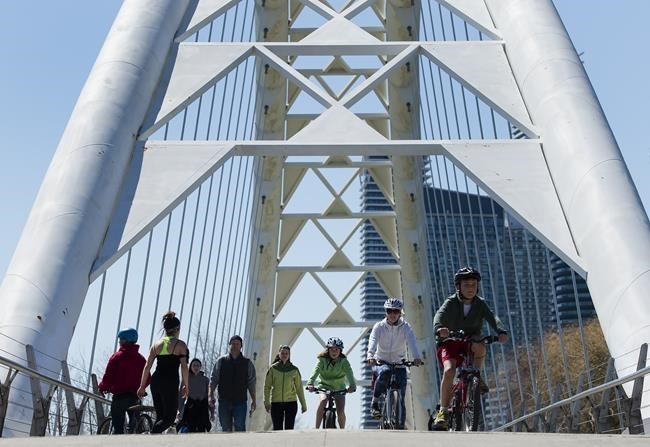As spring turned to summer amid COVID-19 lockdowns, Brendan Kinnon wanted to get in shape, save money and avoid the crowded Toronto subway he took to work each day.
So he decided to buy a bicycle, even though it had been four years since he'd ridden one.
He was hardly alone. Around Canada, retailers were selling out of bicycles, parts and accessories as thousands of new cyclists embraced two-wheeled transport in the era of social distancing.
So the 26-year-old actor considered himself lucky when he tracked down a 1980s-era Raleigh road bike for $300 on Kijiji.
“After a few messages, I went over to the guy’s place, took it for a two-minute test ride, paid in cash and rode it home,” he says. “It’s true what they say: it’s just like riding a bike. It was great.”
A week later, the chain snapped. Kinnon took it straight to a professional bike shop in downtown Toronto, paid $50 for parts and labour, and rode it away the same day.
“My own knowledge of bikes is not very high at all,” he says. “I'm not doing any of my own maintenance. I go to the shop to get anything done, just for security and the peace of mind that it’s done properly.”
Kinnon had been back in the saddle for a month, and was enjoying Toronto’s new bike lanes, when one of his brake levers snapped. He took it in to a different mechanic and asked for a full service, which set him back $120. Worse than the cost, he says, was the fact it kept him off the road for a week.
“It's super frustrating that I've already spent about half of what I paid for the bike on repairs,” he says.
Even so, he estimates he’s saved more than $600 in transit costs since May. And the experience has made him keen to learn more about bike maintenance and repair, both to save money and be more self reliant.
“Every bike shop I’ve been to has been great, but it would be good to know the basics in case I’m ever in the middle of nowhere,” he says. “I've got some friends who are more into bikes, so I hope that by being in contact with them I can learn. It definitely seems doable.”
“It’s doable” is the message Sunny Nestler would like to send. “Anyone can learn to do some aspect of their own bike maintenance,” says the programs manager at The Bike Kitchen, a community bike shop in the University of British Columbia.
Nestler recommends new cyclists start with the “ABCs”.
“A is for air, learn about tire pressure, tubes and compatibility. B is for brakes: learn how to do a quick brake check to make sure it's safe to ride. C stands for chain, knowing when your chain needs oil, oiling it and making sure your drive train in good working order.
“If you do the ABC maintenance and get a tune up once a year, your bike will last you a really long time. I'm riding around on a bike that's older than I am. Maintenance saves you the cost of a new bike over and over again.”
According to Nestler, learning the basics takes around two hours. Even a more advanced introductory mechanics course can be finished in eight. And you don’t need much equipment: tire levers, a stand and a pedal wrench are helpful, but common tools like Allen keys and block wrenches can be used in many basic repairs. Otherwise the most useful tools are oil, rags and zip ties.
For those who are already mechanically inclined, Nestler says there are plenty of how-to videos on YouTube. Otherwise, she recommends checking bikecollective.org to find your local community bike shop. The benefits of learning how to repair your own bike might even go beyond the financial.
“It gives you more independence, you can go anywhere. Understanding how mechanical objects work is a skill that translates into every other aspect of life,” Nestler says.
“There are zero drawbacks to learning how to do the basics.”
This report by The Canadian Press was first published Nov. 10, 2020.
Alex McClintock, The Canadian Press

